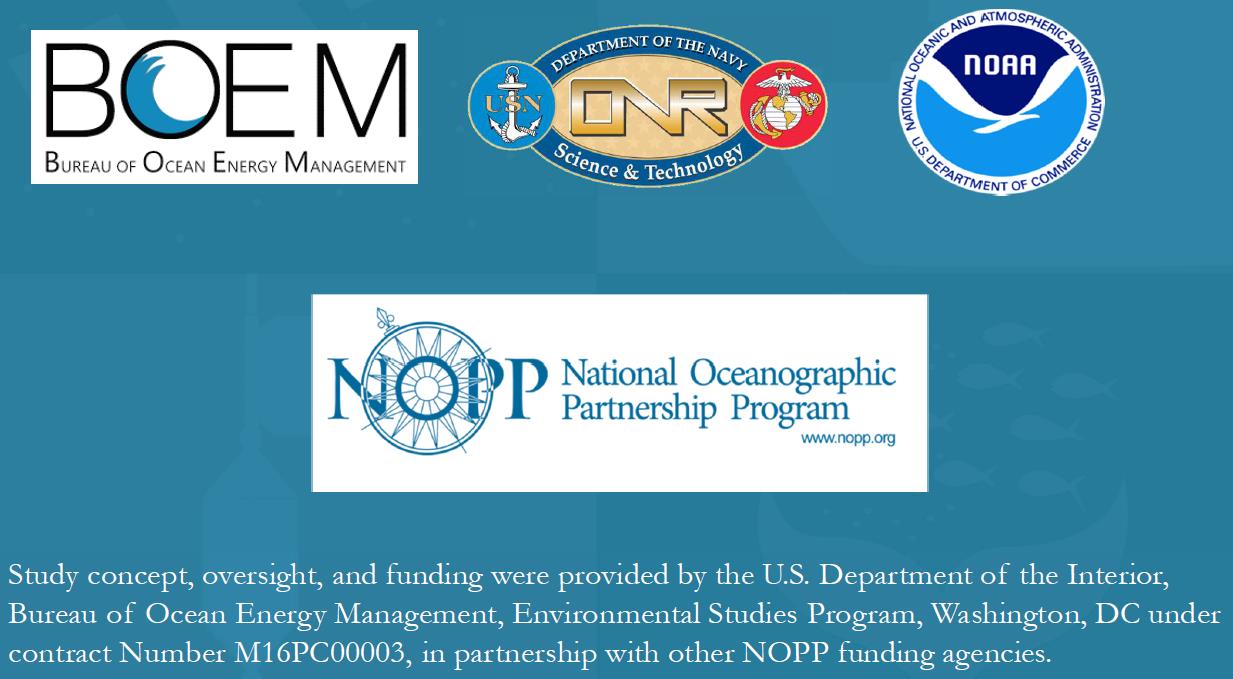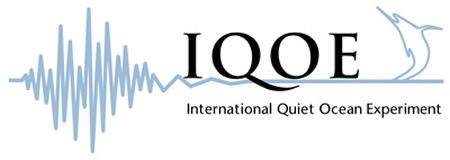AR049 Blog Post, 19 December 2020 by Brandyn Lucca
In my previous blog post I mentioned my interest in measuring the acoustic signatures of animals. Generally, this involves sending a soundwave into an aquarium and measuring the echo that returns from the animal. This echo allows us to measure the ‘target strength’ of an animal, which can be thought of as their acoustic signature. We can infer target strength for entire taxonomic groups (like deep-sea fishes or squids) when we measure target strength from many individuals. We care about target strength because when we measure biology using active acoustics (i.e., our ship’s fancy fish finders) we sometimes want to convert our units to data that are accessible to fishery managers and ecosystem modelers, such as abundance (i.e., number of animals), density (i.e., number of animals per unit volume of water), and/or biomass (i.e., the summed weight or tonnage of animals). For example, if we measure a school of fish and it is 1,000 acoustic units, and we know one fish is normally 1 acoustic unit, we can then say that that school contains approximately 1,000 fish. Unfortunately, the math isn’t necessarily as simple and straightforward as that, but the logic remains the same.
My experiment involves putting animals into an aquarium equipped with two transducers (i.e., instruments that can send and receive soundwaves; Figure 1) and tethering an animal with fishing line to prevent them from moving around due to the ship moving (Figure 2). This allows me to then measure the echo of the tethered animal, which I can then later convert into target strength (Figure 3). On this trip, I was able to measure the echoes of a variety of different animals including several types of shrimp, meso- and bathypelagic fish, krill, and squid (Figure 4).
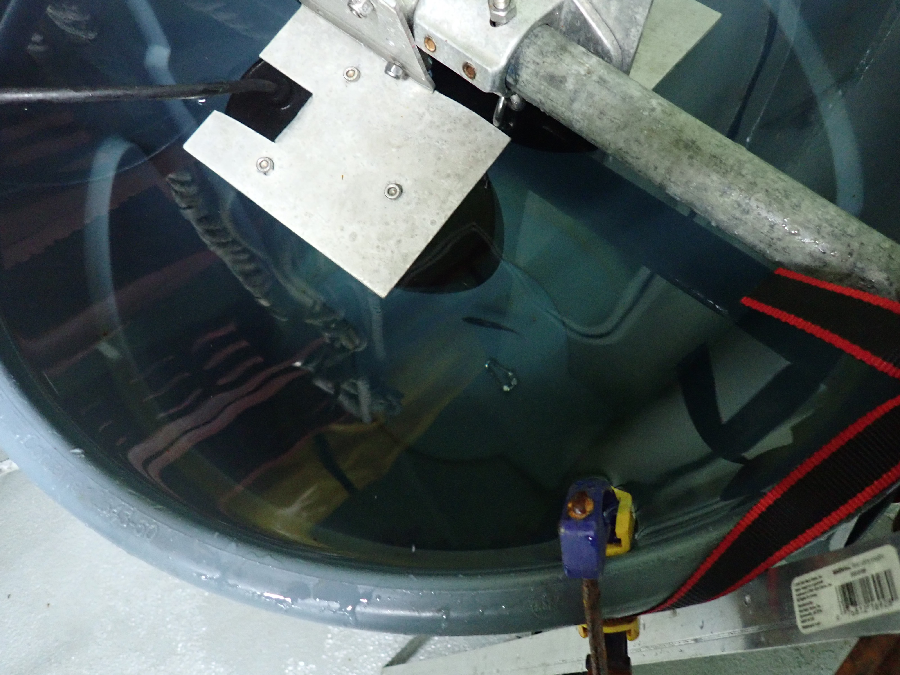
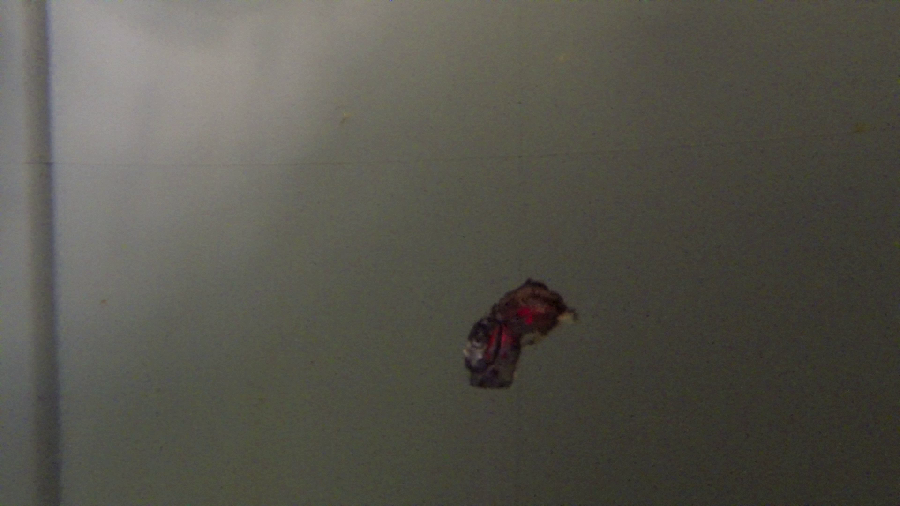
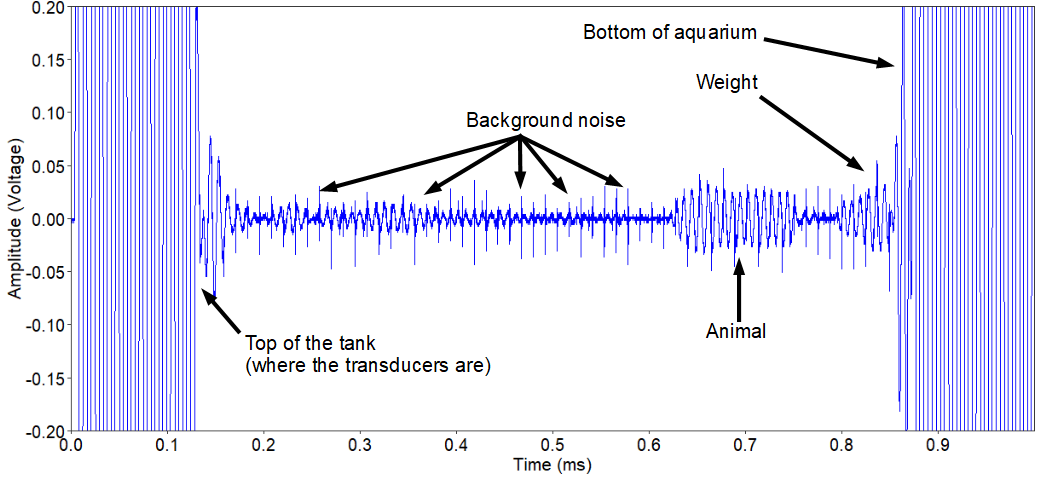
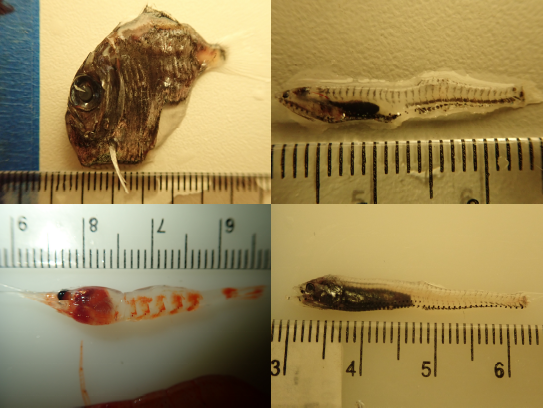
On that note, I’d just like to give my deepest gratitude and thanks to the ships’ crews aboard both the R/V Neil Armstrong (this trip, as well as in 2017 and 2019) and R/V Endeavour (2018), the many scientists and artists who joined us, and all of the project leaders, support staff, and administrators specific to the ADEON project. I’ve been extremely fortunate to have been involved on this project and collect an awesome amount of data crucial for my research. Although it was bittersweet knowing that my final animal this trip would be the last measurements ever for this project, I’ve been blessed to have grown immensely as a scientist and the menagerie (shout out to Tony) of experiences I’ve had and the many friends I’ve made. A fun coincidence that I just discovered this morning was that the last animal I measured was also the same as the first animal I ever measured in 2017 (a Cyclothone braueri, to be precise).
Signing off,
Brandyn Lucca

